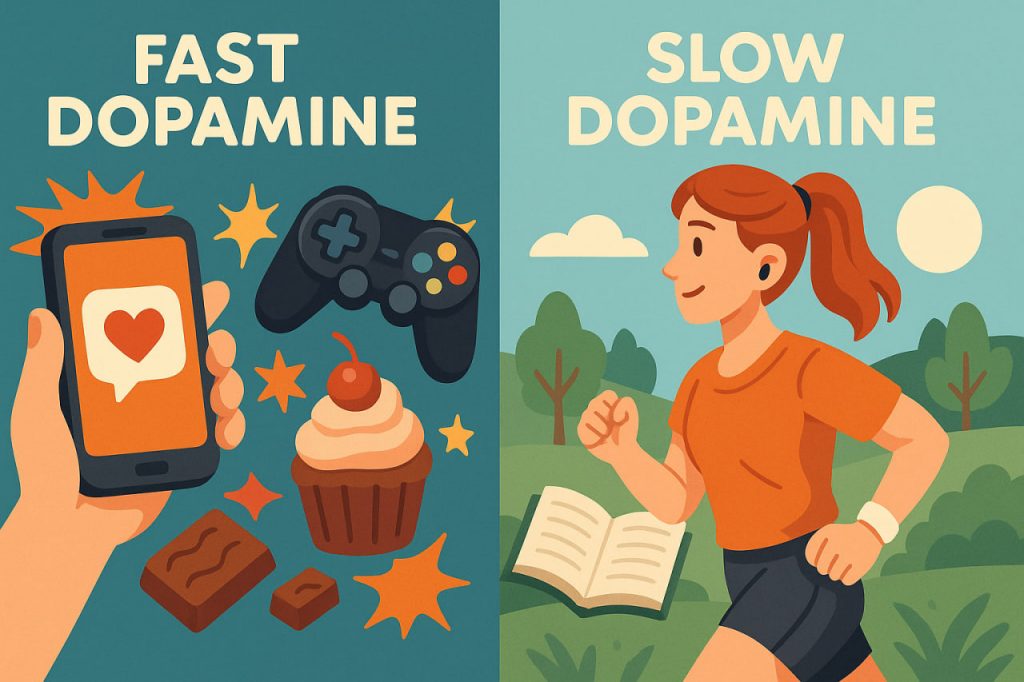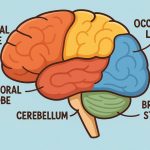Dopamine is one of the brain’s most important neurotransmitters, playing a central role in motivation, reward, learning, and movement. Scientists distinguish between two types of dopamine release: fast dopamine spikes and slow dopamine tone. Understanding the difference between them explains why some activities feel instantly rewarding while others build long-term satisfaction and resilience.
Fast Dopamine: Instant Rewards
Fast dopamine is released in quick bursts, usually in response to something exciting or pleasurable. This can be eating sweet food, checking social media notifications, playing a video game, or receiving unexpected praise. These short spikes give the brain an immediate feeling of pleasure and push us to repeat the behavior. However, the brain adapts quickly to constant fast dopamine, which means the same action may bring less joy over time, creating a cycle of craving stronger stimulation.
Slow Dopamine: Long-Term Balance
Slow dopamine, also known as baseline or tonic dopamine, works in the background. It does not give a sudden rush but instead provides a stable sense of motivation, focus, and well-being. Slow dopamine is built through long-term habits such as regular exercise, studying, creative work, or maintaining social bonds. Unlike fast dopamine, it helps sustain effort even without instant reward and protects against burnout or emotional lows.
The Balance Between Fast and Slow
Both systems are essential. Fast dopamine ensures that we respond to immediate opportunities, while slow dopamine supports persistence and long-term growth. Problems arise when fast dopamine dominates—leading to addiction, impulsive decisions, or lack of motivation for slower, meaningful goals. Conversely, if slow dopamine is too low, people may feel apathetic, depressed, or unable to pursue tasks requiring steady effort.
How to Support Healthy Dopamine Function
Maintaining a balance means enjoying fast dopamine in moderation while strengthening slow dopamine systems. Activities such as meditation, learning new skills, physical activity, quality sleep, and building supportive relationships naturally enhance slow dopamine. Reducing overstimulation from digital devices or excessive sugar helps prevent the brain from being trapped in a cycle of fast dopamine dependence.
Conclusion
Dopamine is not just about pleasure; it is about how we direct our energy and motivation. Fast dopamine provides excitement, while slow dopamine ensures persistence and meaning. When these two forms of dopamine are in balance, we experience both joy in the moment and long-term fulfillment.
Glossary
- Dopamine – a neurotransmitter involved in motivation, reward, and movement.
- Neurotransmitter – a chemical messenger in the brain and nervous system.
- Fast dopamine – short bursts of dopamine release linked to immediate rewards.
- Slow dopamine – steady background dopamine regulating long-term motivation.
- Addiction – dependence on substances or behaviors due to overstimulation of reward systems.


